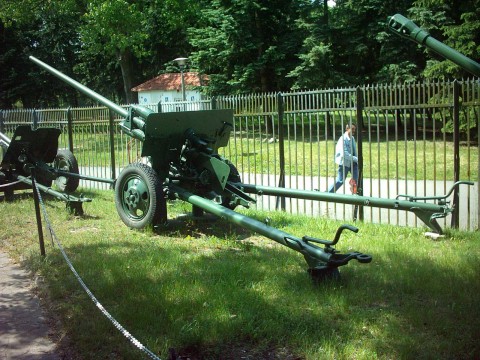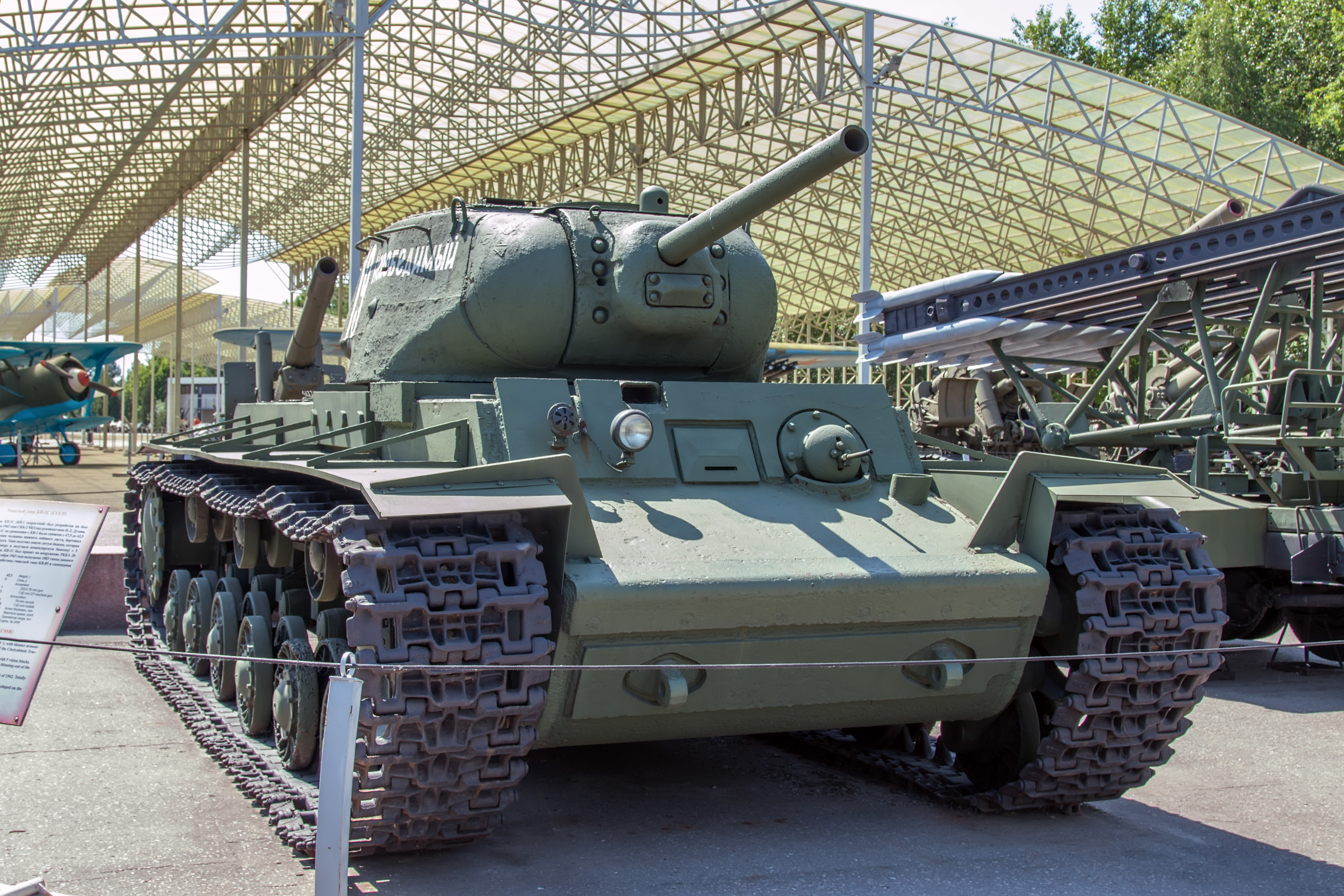|
Zis-2
The ZiS-2 () (GRAU index: 52-P-271) is a Soviet 57 mm anti-tank gun used during World War II. The ZiS-4 is a version of the gun that was meant to be installed in tanks. ''ZiS'' stands for ''Zavod imeni Stalina'' (Russian ''Завод имени Сталина'', 'Factory named after Stalin'), the official title of Artillery Factory No. 92, which produced the gun first. Development In the beginning of 1940 the design office of V. G. Grabin received a task from the artillery department to develop a powerful anti-tank gun. The head of this department, Marshal Kulik, and his subordinates estimated that the use of heavily armoured tanks by the USSR in the Winter War would not have gone unnoticed in Nazi Germany and would lead to the development of similar fighting machines there. There is also a chance that the department was influenced by German propaganda about the experimental multi-turreted "supertank" NbFz, i.e. heavier armour was attributed to this vehicle than it actu ... [...More Info...] [...Related Items...] OR: [Wikipedia] [Google] [Baidu] |
Nizhny Novgorod
Nizhny Novgorod ( ; rus, links=no, Нижний Новгород, a=Ru-Nizhny Novgorod.ogg, p=ˈnʲiʐnʲɪj ˈnovɡərət, t=Lower Newtown; colloquially shortened to Nizhny) is a city and the administrative centre of Nizhny Novgorod Oblast and the Volga Federal District in Russia. The city is located at the confluence of the Oka (river), Oka and the Volga rivers in Central Russia, with a population of over 1.2 million residents, up to roughly 1.7 million residents in the urban agglomeration. Nizhny Novgorod is the List of cities and towns in Russia by population, sixth-largest city in Russia, the Volga#Biggest cities on the shores of the Volga, second-most populous city on the Volga, as well as the Volga Federal District. The city is located 420 kilometers (260 mi) east of Moscow. It is an important economic, transportation, scientific, educational and cultural centre in Russia and the vast Volga-Vyatka economic region, and the main centre of river tourism in Russia. In the his ... [...More Info...] [...Related Items...] OR: [Wikipedia] [Google] [Baidu] |
GRAU
The Main Missile and Artillery Directorate of the Ministry of Defense of the Russian Federation (), commonly referred to by its transliterated acronym GRAU (), is a department of the Russian Ministry of Defense. It is subordinate to the Chief of Armament and Munition of the Russian Armed Forces, a vice-minister of defense. The organization dates back to 1862 when it was established under the name Main Artillery Directorate (, GAU). The "R" from "rockets" was added to the title from 19 November 1960. The GRAU is responsible for assigning GRAU indices to Russian army ammunitions and equipment. As of April 2025, the Chief of the GRAU was Major General Aleksey Volkov. Arsenals Arsenals of the GRAU, according to Kommersant-Vlast in 2005, included the 53rd at Dzerzhinsk, Nizhniy Novogorod Oblast, the 55th in the Sklad-40 microraion at Rzhev, the 60th at Kaluga, the 63rd at Lipetsk, the 75th at Serpukhov south of Moscow, and the 97th at Skolin (all five in the Moscow Milita ... [...More Info...] [...Related Items...] OR: [Wikipedia] [Google] [Baidu] |
Tiger I
The Tiger I () was a Nazi Germany, German heavy tank of World War II that began operational duty in 1942 in North African Campaign, Africa and in the Soviet Union, usually in independent German heavy tank battalion, heavy tank battalions. It gave the German Army (1935–1945), German Army its first armoured fighting vehicle that mounted the 8.8 cm KwK 36, KwK 36 gun (derived from the 8.8 cm Flak 18/36/37/41, 8.8 cm Flak 36, the famous "eighty-eight" feared by Allied troops). 1,347 were built between August 1942 and August 1944. After August 1944, production of the Tiger I was phased out in favour of the Tiger II. While the Tiger I has been called an outstanding design for its time, it has also been criticized for being overengineering, overengineered, and for using expensive materials and labour-intensive production methods. In the early period, the Tiger was prone to certain types of track failures and breakdowns. It was expensive to maintain, but generally mec ... [...More Info...] [...Related Items...] OR: [Wikipedia] [Google] [Baidu] |
ZiS-3
The 76-mm divisional gun M1942 (ZiS-3) () (GRAU index: 52-P-354U) was a Soviet 76.2 mm divisional field gun used during World War II. ''ZiS'' was a factory designation and stood for ''Zavod imeni Stalina'' ("factory named after Stalin"), the honorific title of Artillery Factory No. 92, which first constructed this gun. History Artillery Factory No. 92 began designing the ZiS-3 at the end of 1940. The ZiS-3 combined the light carriage from the 57 mm ZiS-2 anti-tank gun and the powerful 76.2 mm barrel from the F-22USV, the previous divisional field gun. The addition of a muzzle brake reduced recoil and prevented damage to the light carriage upon firing. Producing a ZiS-3 cost only a third of the time and two-thirds of the money of a F-22USV by making greater use of casting, stamping and welding. V. G. Grabin, the chief designer of Soviet medium caliber guns, initiated the gun's development without state approval, and the prototype was hidden from the state. ... [...More Info...] [...Related Items...] OR: [Wikipedia] [Google] [Baidu] |
Red Army
The Workers' and Peasants' Red Army, often shortened to the Red Army, was the army and air force of the Russian Soviet Republic and, from 1922, the Soviet Union. The army was established in January 1918 by a decree of the Council of People's Commissars to oppose the military forces of the new nation's adversaries during the Russian Civil War, especially the various groups collectively known as the White Army. In February 1946, the Red Army (which embodied the main component of the Soviet Armed Forces alongside the Soviet Navy) was renamed the "Soviet Army". Following the dissolution of the Soviet Union it was split between the post-Soviet states, with its bulk becoming the Russian Ground Forces, commonly considered to be the successor of the Soviet Army. The Red Army provided the largest land warfare, ground force in the Allies of World War II, Allied victory in the European theatre of World War II, and its Soviet invasion of Manchuria, invasion of Manchuria assisted the un ... [...More Info...] [...Related Items...] OR: [Wikipedia] [Google] [Baidu] |
Rolled Homogeneous Armour
Rolled homogeneous armour (RHA) is a type of vehicle armour made of a single steel composition hot-rolled to improve its material characteristics, as opposed to layered or cemented armour. Its first common application was in tanks. After World War II, it began to fall out of use on main battle tanks and other armoured fighting vehicles intended to see front-line combat as new anti-tank weapon technologies were developed which were capable of relatively easily penetrating rolled homogeneous armour plating even of significant thickness. Today, the term is primarily used as a unit of measurement of the protection offered by armour on a vehicle (often composed of materials that may not actually contain steel, or even contain any metals) in equivalent ''millimetres of RHA'', referring to the thickness of RHA that would provide the same protection. Typically, modern composite armour can provide the same amount of protection with much thinner and lighter construction than its protective ... [...More Info...] [...Related Items...] OR: [Wikipedia] [Google] [Baidu] |
KV-1 (tank)
The Kliment Voroshilov (KV; ) tanks are a series of Soviet heavy tanks named after the Soviet defence commissar and politician Kliment Voroshilov who operated with the Red Army during World War II. The KV tanks were known for their heavy armour protection during the early stages of the war, especially during the first year of the German invasion of the Soviet Union. In certain situations, even a single KV-1 or KV-2 supported by infantry could halt German formations. The German ''Wehrmacht'' at that time rarely deployed its tanks against KVs, as their own armament was too poor to deal with the "''Russischer Koloss''" – "Russian Colossus". The KV tanks were practically immune to the 3.7 cm KwK 36 and howitzer-like, short-barreled guns mounted, respectively, on the early Panzer III and Panzer IV tanks fielded by the invading German forces. Until the Germans developed more effective guns, the KV-1 was invulnerable to almost any German weapon except the 8.8 cm Flak gun. Prior t ... [...More Info...] [...Related Items...] OR: [Wikipedia] [Google] [Baidu] |
Neubaufahrzeug
The German ("new construction vehicle"—a cover name), abbreviated as PzKpfw Nb.Fz, series of tank prototypes were a first attempt to create a medium tank for the Wehrmacht after Adolf Hitler had come to power. Multi-turreted, heavy and slow, they were not considered successful, which led to only five being produced. These were primarily used for propaganda purposes and training, though three took part in the Battle of Norway in 1940. Pictures of the were displayed with different turret models and orientations to fool allied spies; American and Soviet agents independently reported that the Germans had two new heavy tanks, the Panzer V and VI. In reality, these tanks were quite different from the Panzer V Panther and the Panzer VI Tiger. Development Development of the started in 1932 when 6 established design specifications for a new 15 tonne tank to be known as the "". It had many connections to the previous , utilizing many of the same components including the engine a ... [...More Info...] [...Related Items...] OR: [Wikipedia] [Google] [Baidu] |
Nazi Germany
Nazi Germany, officially known as the German Reich and later the Greater German Reich, was the German Reich, German state between 1933 and 1945, when Adolf Hitler and the Nazi Party controlled the country, transforming it into a Totalitarianism, totalitarian dictatorship. The Third Reich, meaning "Third Realm" or "Third Empire", referred to the Nazi claim that Nazi Germany was the successor to the earlier Holy Roman Empire (800–1806) and German Empire (1871–1918). The Third Reich, which the Nazis referred to as the Thousand-Year Reich, ended in May 1945, after 12 years, when the Allies of World War II, Allies defeated Germany and entered the capital, Berlin, End of World War II in Europe, ending World War II in Europe. After Hitler was appointed Chancellor of Germany in 1933, the Nazi Party began to eliminate political opposition and consolidate power. A 1934 German referendum confirmed Hitler as sole ''Führer'' (leader). Power was centralised in Hitler's person, an ... [...More Info...] [...Related Items...] OR: [Wikipedia] [Google] [Baidu] |
Winter War
The Winter War was a war between the Soviet Union and Finland. It began with a Soviet invasion of Finland on 30 November 1939, three months after the outbreak of World War II, and ended three and a half months later with the Moscow Peace Treaty on 13 March 1940. Despite superior military strength, especially in tanks and aircraft, the Soviet Union suffered severe losses and initially made little headway. The League of Nations deemed the attack illegal and expelled the Soviet Union from its organization. The Soviets made several demands, including that Finland cede substantial border territories in exchange for land elsewhere, claiming security reasonsprimarily the protection of Leningrad, from the Finnish border. When Finland refused, the Soviets invaded. Most sources conclude that the Soviet Union had intended to conquer all of Finland, and cite the establishment of the Finnish Democratic Republic, puppet Finnish Communist government and the Molotov–Ribbentrop Pact' ... [...More Info...] [...Related Items...] OR: [Wikipedia] [Google] [Baidu] |
Grigory Kulik
Grigory Ivanovich Kulik (; ; 9 November 1890 – 24 August 1950) was a Soviet military commander and Marshal of the Soviet Union who served as chief of the Red Army's Main Artillery Directorate from 1937 until June 1941. Born into a Ukrainian peasant family near Poltava, Kulik served as an artillery officer in the Imperial Russian Army during the World War I, First World War. On the outbreak of the Russian Revolution, he joined the Communist Party of the Soviet Union, Bolsheviks and the Red Army. He fought alongside Joseph Stalin at the Battle of Tsaritsyn during the Russian Civil War and quickly became one of Stalin's most favoured generals. In 1937, he was named chief of the Main Artillery Directorate. Kulik had a highly conservative outlook in military technology and theory. He was a strong opponent to Marshal Mikhail Tukhachevsky's reforms and his deep operations theory, and dismissed innovations such as the T-34 and Kliment Voroshilov tank, KV-1 tanks and the Katyusha rocke ... [...More Info...] [...Related Items...] OR: [Wikipedia] [Google] [Baidu] |
Marshal
Marshal is a term used in several official titles in various branches of society. As marshals became trusted members of the courts of Middle Ages, Medieval Europe, the title grew in reputation. During the last few centuries, it has been used for elevated offices, such as in military rank and civilian law enforcement. In most countries, the rank of Field marshal, Marshal is the highest Army rank (equivalent to a five-star General of the Army (United States), General of the Army in the United States). Etymology ''Marshal'' is an ancient loanword from Old French ''mareschal'' (cf. Modern French ''maréchal''), which in turn is borrowed from Old Frankish *' "stable boy, keeper, servant", attested by Medieval Latin ''mariscalcus'' from a Proto-Germanic ''*maraχskalkaz'' (cf. Old High German ''marahschalh'')p. 93b-283a, T. F. Hoad, ''The Concise Oxford Dictionary of English Etymology'' (Oxford University Press, 1993) being still evident in Middle Dutch ''maerscalc'', ''marscal'', ... [...More Info...] [...Related Items...] OR: [Wikipedia] [Google] [Baidu] |










